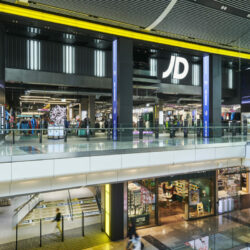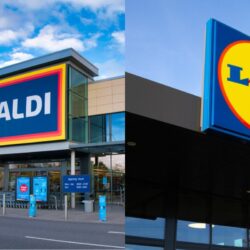The last few decades have seen a major shift in customer behaviour with the explosion of ecommerce forever changing how retailers logistically manage and deliver products to their customers. The next five years are poised for still more disruptive change. The recent Forrester TechRadar: Logistic Applications report concurs with this theory, noting the urgency with which retailers should start assessing and deploying future technologies.
The dynamic world of omnichannel retailing severely breaks down traditional supply chain models. Retailers can no longer rely on pushing bulk merchandise to distribution centres, only to then pull it from pallet to store. Shorter product lifecycles, product range extensions, changes in shopping habits and the growth of parcel tracking are just some of the challenges in the new reality of retail logistics.
Online retailing has driven a significant increase in returns, with consumers ordering multiple dress sizes to try on in the comfort of their homes, safe in the knowledge that they can return the ones that don‘t fit. Retailers therefore have to ensure they have the ability to authorise and manage returns, as well as the dispositioning of returned merchandise that might need to be – in this apparel example – cleaned, pressed and ‘re-hung‘ for resale.
As traditional high street retailers extend product ranges to compete with online players and fluctuating consumer spending behaviours, retail logistics must become more nimble to cope with shorter product lifecycles. With the advent of Sky On Demand and Netflix, the next generation of consumers are easily defined as the ‘I want it now‘ generation. Consumers are becoming conditioned to expect certain services and considerations by retailers who are leading the pack. Retailers may believe they do not compete with the likes of Amazon, however in truth, they do. As customers understand what is possible, they will want the same access, speed and tailored experience from all of the retailers they choose to frequent. Furthermore, they will have income to spend, but little time to spend it, and will demand shorter delivery times than that of any previous generation.
Because of this, an integrated link between a retailer‘s online and offline operations has never been more crucial. A recent Mintel report found that over a third (35%) of UK consumers have used click-and-collect services in the past year, and 64 per cent say that they now shop online more due to retailers offering such services. Additionally, more than half (58%) say that click-and-collect encourages them to visit stores more frequently.
It would seemingly be foolish for retailers to ignore such compelling statistics, however many have been slow to jump on board. Forrester‘s ‘The Retail Order Management Imperative‘ report, commissioned by OrderDynamics, showed that only 23 per cent of retailers have a click-and-collect programme in place and 20 per cent have a reserve-only online, pick-up-in-store programme implemented. Demand planning and forecasting needs to be fully elastic to adapt to any changing market conditions.
RELATED STORIES


















